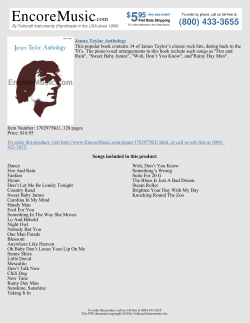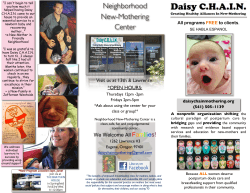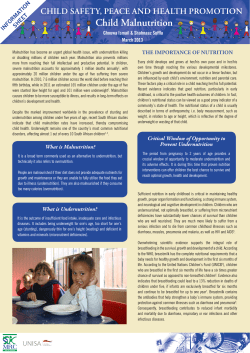
Document 149867
For the treatment of persistent deep breast pain, the following regimen may be appropriate. FLUCONAZOLE capsules: 400mgs, first dose then 200mgs daily for 14 days. Breastfeeding with Thrush Due to persistence and risk of cross-infection these doses are higher than normal and the treatment period is longer than normal. Continue to use topical treatments for both mother and baby. Fluconazole is acceptable in nursing mothers because amounts excreted into breastmilk are less than the neonatal fluconazole dosage. Although no adequate clinical studies on fluconazole in breast candida have been published, a survey of members of the Academy of Breastfeeding Medicine found that fluconazole is often prescribed for nursing mothers to treat breast candidiasis, especially with recurrent or persistent infections.[1] Treatment of the mother and infant simultaneously with fluconazole is often used when other treatments fail.[1][2][3] The dosage of fluconazole in breastmilk with a maternal dosage of 200 mg daily is not sufficient to treat oral thrush in the infant. NOTE: The above statement on safety of fluconazole during breastfeeding has been drawn from the US National Library of Medicine Toxicology Network database 1. Brent NB. Thrush in the breastfeeding dyad: results of a survey on diagnosis and treatment. Clin Pediatr (Phila). 2001;40:503-6. 2. Bodley V, Powers D. Long-term treatment of a breastfeeding mother with fluconazole-resolved nipple pain caused by yeast: a case study. J Hum Lact. 1997;13:307-11. 3. Chetwynd EM, Ives TJ, Payne PM et al. Fluconazole for postpartum candidal mastitis and infant thrush. J Hum Lact. 2002;18:168-71. © 2011 Written by Elizabeth Thompson RM IBCLC Breastfeeding Adviser, Chris Evans Chief Pharmacist, St George’s Healthcare NHS Trust, Nick Beavon Chief Pharmacist, Mary Boucher Pharmaceutical Advisor, NHS Wandsworth. Fluconazole information given by Dr Anthony F. Williams, Reader in Child Nutrition & Consultant in Neonatal Paediatrics. St George’s Healthcare NHS Trust. 4 One of the most painful breastfeeding conditions is caused by a fungal infection, Candida albicans, more commonly known as „thrush‟. It always occurs in both breasts simultaneously and often starts after either mother or baby has had a course of antibiotics. It is important to ensure that the baby is positioned well and is correctly attached to the breast as the pain experienced from poor attachment can be confused with the pain caused by Thrush. In describing the condition, mothers have often said that, when they first started breastfeeding, they had sore nipples which then improved, but that later the nipples became so sore that each feed was very distressing. It felt as if they were feeding through broken glass. Signs and Symptoms for the Mother Itching or burning of the skin over the nipples /areola Soreness of the skin to start with Severe pain when the baby initially latches on to the breast which becomes progressively worse with each re-latching Nipples are very sensitive to the cold The water from a shower is unbearably painful Colour change of the skin of the nipple and areola, these areas becoming bright pink/red immediately after feeds The skin looks shiny, bright pink/red, angry looking, moist/soggy, and sometimes tiny pinhead lumps can be seen Cracked nipples that will not heal Nipples that blanch (go white) during feeds. There is no white rash or discharge as seen in vaginal or oral thrush. There may be shooting or stabbing pain in the breast Deep pain often subsides during the feed, only to return and last up to an hour or two 1 2 Signs in the Baby Mother may notice that her baby has become “windy” and fretful and is more difficult to settle Baby may be fidgety during feeds, pulls away while feeding and seem uncomfortable White patches may be visible in the baby‟s mouth, particularly on the tongue, these cannot be wiped off Baby may have a nappy rash - red spots or spots that look as if the skin is peeling. It is important to note that babies frequently show no signs of oral thrush. Alternative treatment for baby DAKTARIN GEL – Changes to the licensing of this product means it can no longer be used for babies under 4 months of age unless it is prescribed by a General Practioner (GP) or Qualified Independent ( Nurse or Pharmacist ) Prescribers. Instructions for Use: Apply 1ml, an amount equal to the size of three peas. Four times a day after feeds. Apply with a clean finger & gently smear the gel around the baby‟s gums and mouth. Culturing of mothers milk or nipples is usually not recommended because, even when thrush is present, the results of culture are often negative. Daktarin Gel should never be given off a teaspoon or from a syringe. Treatment PLEASE NOTE: NYSTATIN CREAM and MICONAZOLE GEL are not effective for the treatment of thrush on the breasts/nipples. It is important to treat both mother and baby even when there are no signs of candida in the baby’s mouth. Otherwise the baby will re-infect mother at each feed. When a breastfed baby has oral thrush and the mother is symptom free, both should be treated to eliminate the risk of mother becoming infected. Mother ® Miconazole (DAKTARIN ) Cream would be the first choice of antifungal cream - a small amount to be applied to the nipple and areola after each feed. There is no need to wash it off any cream that hasn‟t been absorbed by the skin will be left on the breast pad. This frequency of application of the cream is more than usual as much of the cream is removed by the use of the breast pads Baby ® Nystatin (NYSTAN ) Suspension (liquid) Dose 0.5ml off a teaspoon after each feed equates to 8 feeds per day with maximum total daily dose of 4ml. If feeding is less frequently then the dose can be given as 1ml FOUR times a day that provides total required 4ml per day.. This ensures that it gets washed well round the baby‟s mouth. Use of the dropper may contaminate the whole bottle How long will it be before the pain goes ? Once treatment has started for both mother and baby the pain will normally ease within 2-3 days There can be a rebound effect around day 7-10 for 24hrs and then the pain will ease considerably It is important to continue treatment for one complete week after being symptom free, otherwise the pain may return Repeat prescriptions will be required from the GP, as it can take four weeks to get rid of the infection. What else you need to know Be diligent with using the treatment Change your breast pads after each feed Hot wash any clothing that comes into contact with the breast. Discard teats, pacifiers and nipple shields and replace with new at weekly intervals Steam sterilise, or boil (for 10 minutes) all feeding equipment being used (Pump kit parts, bottles, teats, pacifiers, nipple shields) Hot temperatures will kill thrush - cold will not Breastmilk should not be frozen at the time of a thrush infection, as thrush survives at cold temperatures & both mother and baby will be re-infected again when it is used. 3
© Copyright 2025















